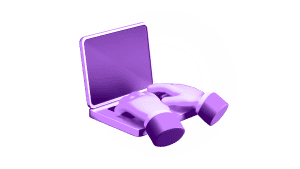Grasping how blockchain works can feel difficult to comprehend at first, but with blockchain explorers, it becomes easier. These platforms allow users to view transactions, wallets, and blocks within a blockchain, all from the comfort of their browsers.
If you are interested in cryptocurrency or have questions about its functionalities, this guide is meant to help you understand blockchain explorers, how they function, and their importance in the modern economy.
Blockchain Explorers Explained
Blockchain explorers are, in essence, web-based applications that allows anyone to search and pull up all activities that occur within a blockchain in real time. You can monitor transactions, wallet addresses, tokens in transit, and even smart contracts— all in one interface.
Imagine having access to a huge database. You can think of a blockchain explorer as a massive database that you can look up wallets, transactions, and other relevant data in. Like blockchain-based currencies, they are accessible to the public so anyone can use them.
Since all blockchains are public ledgers, explorers provide a way pave access to the ongoing activities happening on-chain. This promotes transparency and accountability which are some of the fundamental principles in the cryptocurrency domain.
Etherscan and BscScan are notable examples of blockchain explorers for Ethereum such as Etherscan and BscScan for BNB Chain, respectively. While every explorer is tailored to the blockchain it monitors, all of them allow users to freely and conveniently access on-chain data.
What Can You Do with a Blockchain Explorer?
A blockchain explorer offers several features that help users understand what’s happening on the blockchain. You can perform a transaction search to see the status of any crypto transfer—whether it’s pending, confirmed, or failed. This helps you track your transfers and verify delivery.
You can also do wallet tracking. Just enter a wallet address to view its balance, past activity, and tokens held. This is useful for both casual users and researchers.
Another powerful tool is token monitoring. You can check smart contracts, token transfers, and even gas fees used for each transaction. This gives insight into how active a network is and what’s costing more or less at any time.
If you hold Fan Tokens, a blockchain explorer can help you confirm your voting history, check if you received airdrops, or verify token minting during special campaigns.
Examples of Popular Blockchain Explorers
Most blockchains have their own explorer. These tools are designed to track activity on a specific network, and each one offers features suited to that chain’s structure.
Here are some well-known examples:
- Etherscan – The go-to explorer for Ethereum. It lets users check smart contracts, token balances, and gas fees.
- BSCScan – Built for BNB Chain. It’s popular for tracking low-fee token transfers and DeFi transactions.
- Polygonscan – Used on the Polygon network. It’s great for monitoring fast, low-cost transactions and dApps.
- Chiliz Chain Explorer – Aimed at Fan Token users. It shows voting history, token drops, and club-related transactions on the Chiliz network.
Each of these tools supports real-time blockchain access and helps users interact with on-chain data easily.
| Explorer Name | Chain | Use Case |
| Etherscan | Ethereum | Smart contract tracking, gas monitoring |
| BSCScan | BNB Chain | Fast transaction lookup, DeFi activity |
| Polygonscan | Polygon | Low-cost token transfers, NFT interactions |
| Chiliz Chain Explorer | Chiliz Chain | Fan voting, token drops, and sports events |
Why Blockchain Explorers Matter
Blockchain explorers play a key role in building trust across Web3. By giving everyone access to open data, they remove the need to rely on third-party updates or guesses. You can see the facts for yourself—directly on the chain.
This kind of access supports on-chain verification. Whether you’re a developer checking smart contract events or a casual user confirming a token transfer, you don’t have to take anyone’s word for it. The data is public and provable.
These tools also promote trustless systems. In crypto, trust doesn’t come from promises—it comes from transparency. Blockchain explorers help keep projects and users accountable by making every action traceable and easy to check.
How to Use a Blockchain Explorer – Step-by-Step
Step 1: Choose the correct explorer
First, find the right explorer for your blockchain. For Ethereum, use Etherscan. For BNB Chain, go to BSCScan. If you’re using Fan Tokens, the Chiliz Chain Explorer is the one to visit.
Step 2: Paste a wallet address, transaction hash, or token contract
Copy and paste the information you want to check into the search bar. You can use a wallet address, a transaction ID, or even a token contract.
Step 3: Read the information
You’ll see key details like transaction status (success or fail), number of confirmations, gas fees paid, and time stamps. This shows exactly what happened on-chain.
Step 4: Explore more (optional)
If you’re curious, check other tabs like contract info, internal transactions, or token pages. It’s a great way to learn how things move on the blockchain.
Tip: Don’t worry if some words sound too technical. Focus on what you recognize—token names, values, wallet IDs. The more you use it, the easier it gets.
Final Thoughts – Transparency in Your Hands
In the course of this post, we were able to learn that Blockchain explorers grant users total control on how they perceive and understand on-chain data. Everything is available in real time, one doesn’t need to be worried about security and transparency.
These tools aren’t just for coders. They’re for traders, sports fans, collectors, and even total beginners. That’s the beauty of on-chain verification—it keeps everyone on the same page.
Want to see how Fan Tokens move on-chain? Try exploring the Chiliz Chain with its public explorer and see it all in action.











